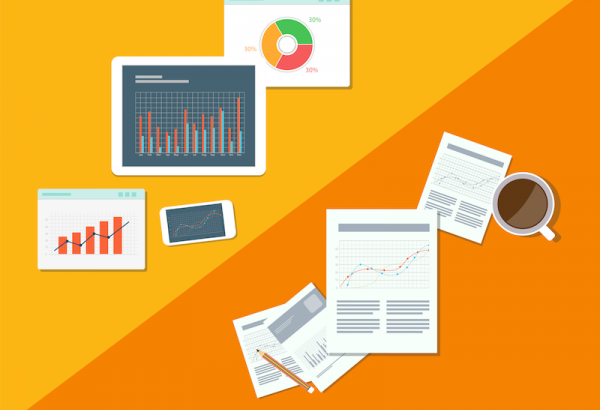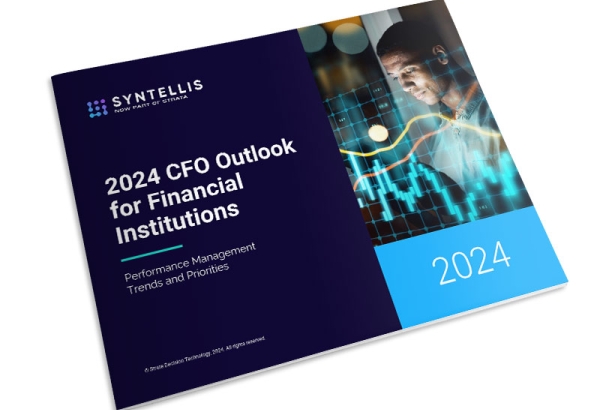How do you measure bank performance? There are hundreds, if not thousands, of metrics or key performance indicators (KPIs) that banks and credit unions can track. To accurately evaluate profit and operations and more effectively manage your business, consider monitoring the following key financial metrics and KPIs.
1. Net Interest Margin
One of the most important KPIs for banks, net interest margin (NIM) reveals a bank’s net profit on interest-earning assets, such as loans or investment securities. Since the interest earned on these assets serves as a primary source of revenue for a bank, this metric can indicate a bank's overall profitability.
2. Return on Assets
Return on assets (ROA) indicates the per-dollar profit a company earns on its assets. This KPI enables institutions to compare different size portfolios; however, it doesn’t account for risk. Two portfolios or two different products can have the same ROA, but they may not carry the same amount of risk.
3. Return on Equity
A two-part measure of financial performance that brings together the income statement and balance sheet, return on equity (ROE) is calculated by dividing net income by shareholders' equity, expressed as a percentage. ROE is considered a gauge of an institution’s profitability and its efficiency in generating profits.
Join us for our Financial Institutions Summit on August 20-21 REGISTER NOW
4. Loan-to-Assets Ratio
The loan-to-assets ratio offers insight into a bank's operations. Banks with a relatively higher loan-to-assets ratio derive more of their income from loans and investments. In contrast, banks with lower loan-to-assets ratios derive a larger portion of their total income from more-diversified, non-interest-earning sources, such as asset management or trading.
5. Risk-Adjusted Return on Capital
Risk-adjusted return on capital (RAROC) is a risk-based profitability measurement. Banks can calculate this by dividing net income (including interest income, interest expense, funds transfer pricing, etc.) by the risk-adjusted capital assigned to each portfolio. RAROC considers the riskiness of the portfolio or instrument when calculating profitability, enabling institutions to more accurately compare products and portfolios of different sizes and make more informed decisions regarding which products to promote and how to price new business.
6. Efficiency Ratio
A financial institution calculates its efficiency ratio by dividing its non-interest expenses by revenue. Combined with a few other metrics, such as expense ratio and revenues, the efficiency ratio can help institutions determine if branches are appropriately staffed and whether they need to pursue additional efficiencies.
7. Loans to Deposits Ratio
Calculated by dividing a bank’s total amount of loans by the total amount of deposits for the same time period, the loan-to-deposit ratio (LDR) can measure a bank’s liquidity, or ability to cover loan losses and customer withdrawals. This can indicate how well a bank is managed and if it is effectively attracting and maintaining customers.
8. Yield on Loans
For financial institutions, yield indicates the net profit that a bank or credit union earns on an investment, such as a loan, which can include interest and dividends.
9. Allowance for Loan and Lease Losses to Loans
Financial institutions are not always able to collect on all loans. With that in mind, they estimate the amount they will likely be unable to collect based on data and other circumstances around the loan. The allowance for loan and lease losses (ALLL) to loans ratio reflects estimated credit losses within a bank’s portfolio of loans.
10. Cost of Total Deposits
Cost of total deposits takes into account non-interest expenses and income, which can be related to products like free checking accounts. Banks can calculate cost of total deposits by subtracting interest expenses and non-interest expenses from non-interest income.
Effectively managing your bank or credit union starts with measuring the right metrics and KPIs. Syntellis’ Axiom Financial Institutions Suite offers integrated financial planning software that acts as a single source of truth for institutions, supporting sound decision-making and optimizing profitability with vital insights.
Learn more about optimizing your financial reporting

5 Tips to Optimize Financial Reporting

3 Ways to Drive Better Decision-Making at Financial Institutions


